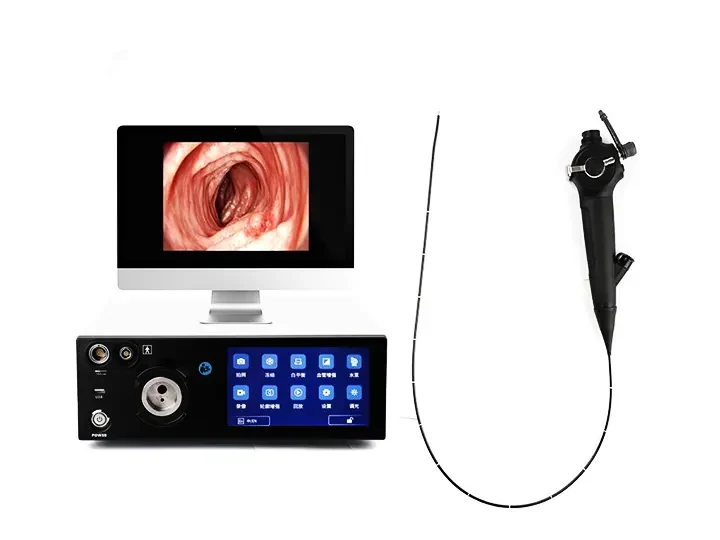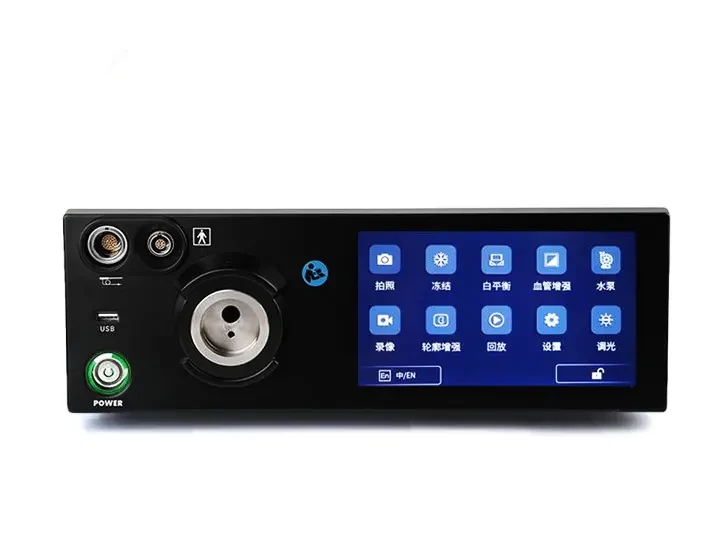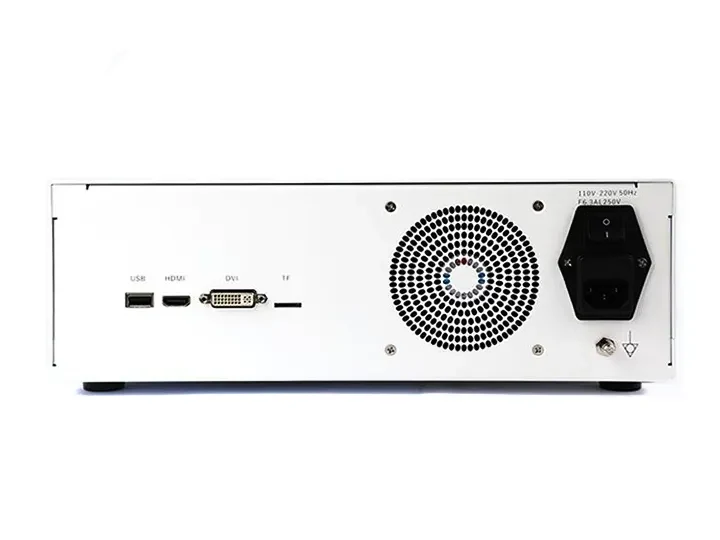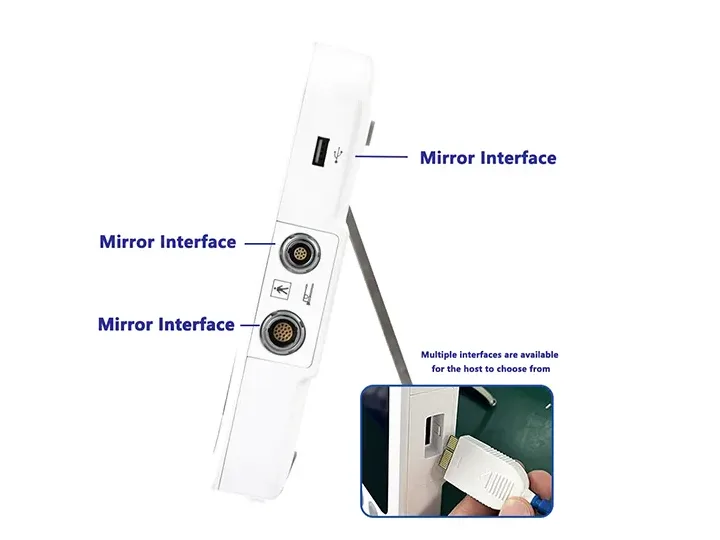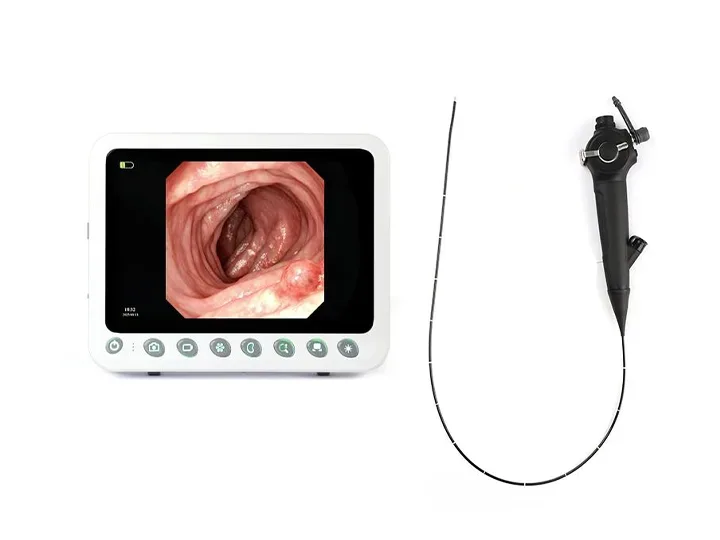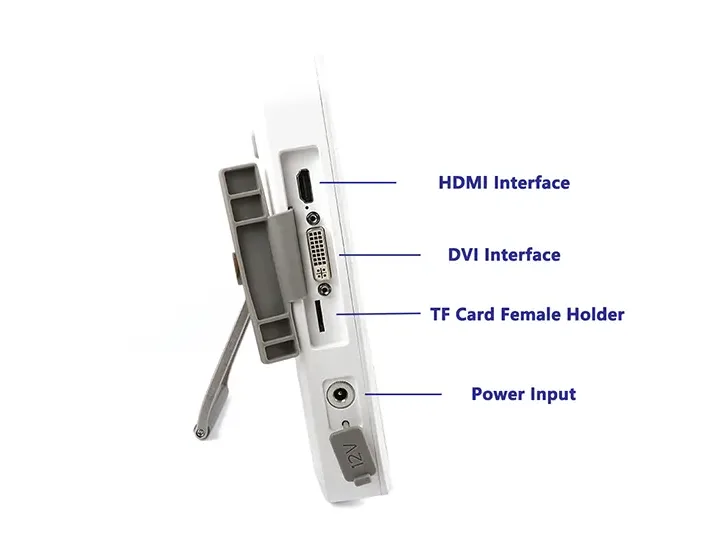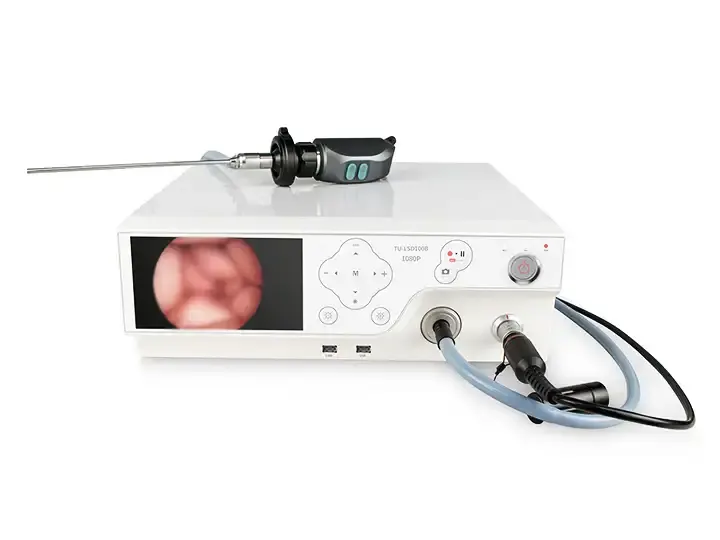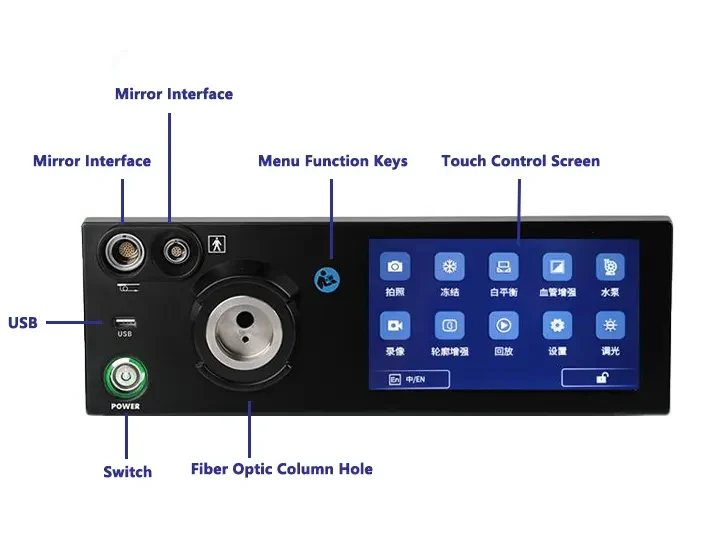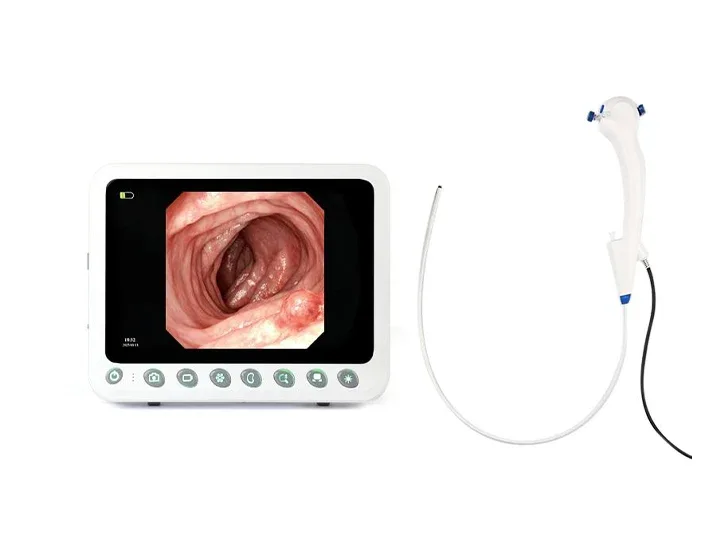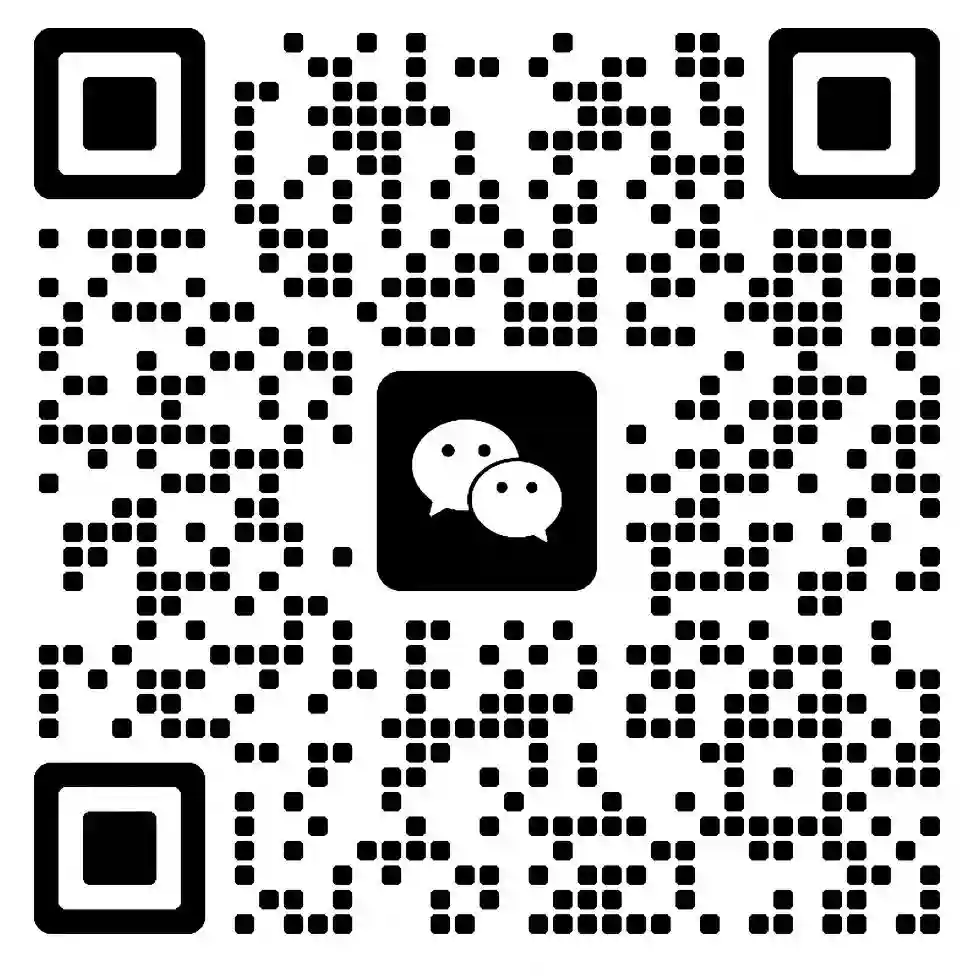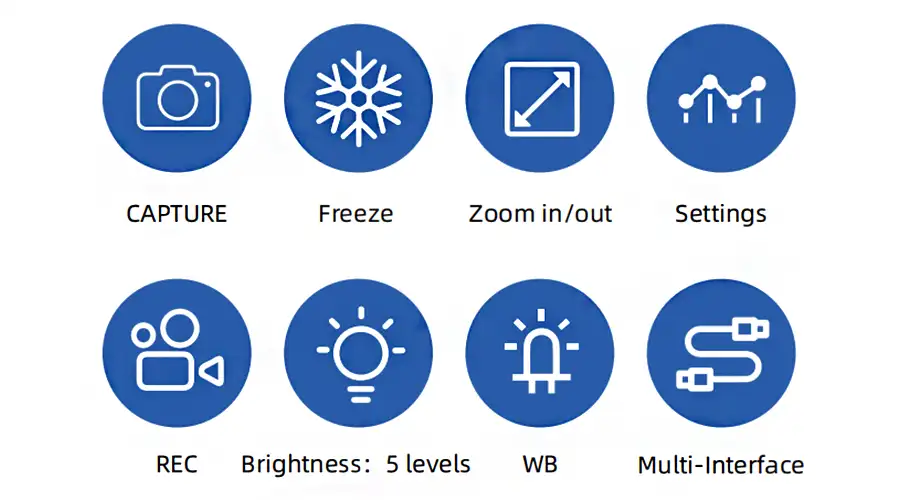
Strong Compatibility
Compatible with Gastrointestinal Endoscopes, Urological Endoscopes, Bronchoscopes, Hysteroscopes,Arthroscopes, Cystoscopes, Laryngoscopes, Choledochoscopes, Strong Compatibility.
Capture
Freeze
Zoom In/Out
Image Settings
REC
Brightness: 5 levels
WB
Multi-Interface
1920 1200 Pixel Resolution Image Clarity
With Detailed Vascular Visualization
for Real-Time Diagnosis
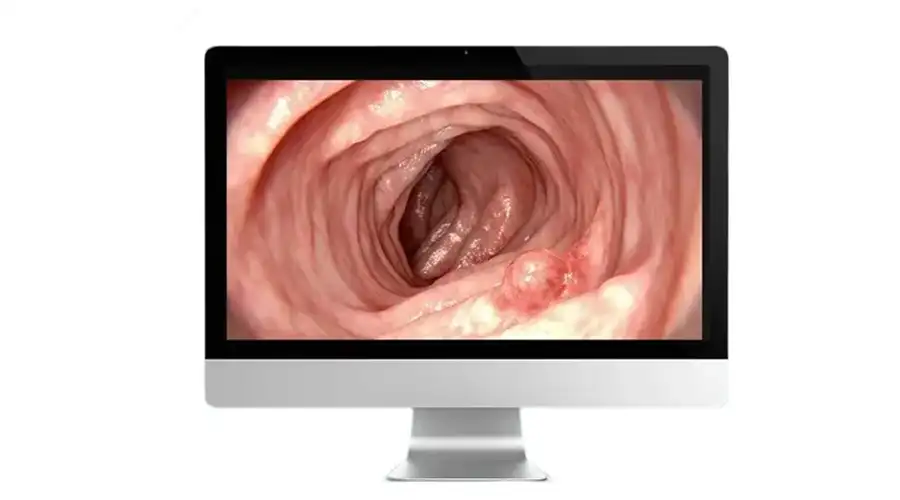
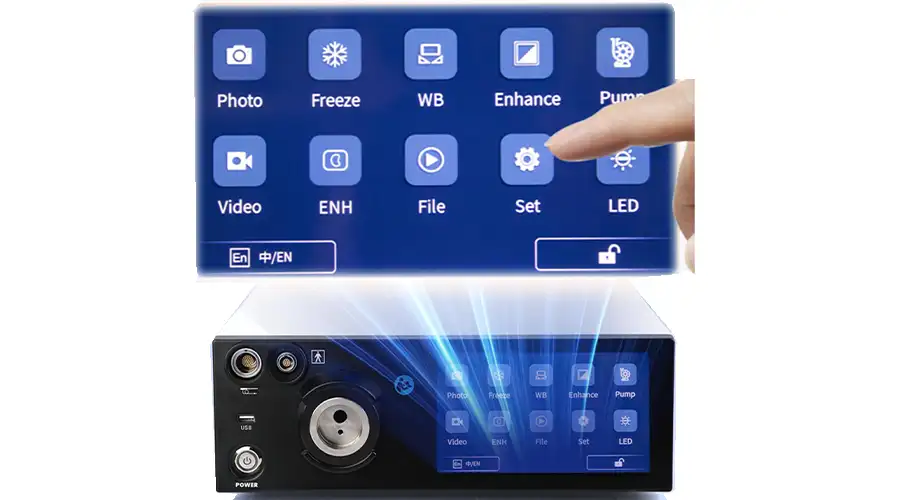
High Sensitivity High-Definition Touchscreen
Instant Touch Response
Eye-comfort HD display
Dual LED Lighting
5 adjustable brightness levels, Brightest at Level 5
gradually dimming to OFF
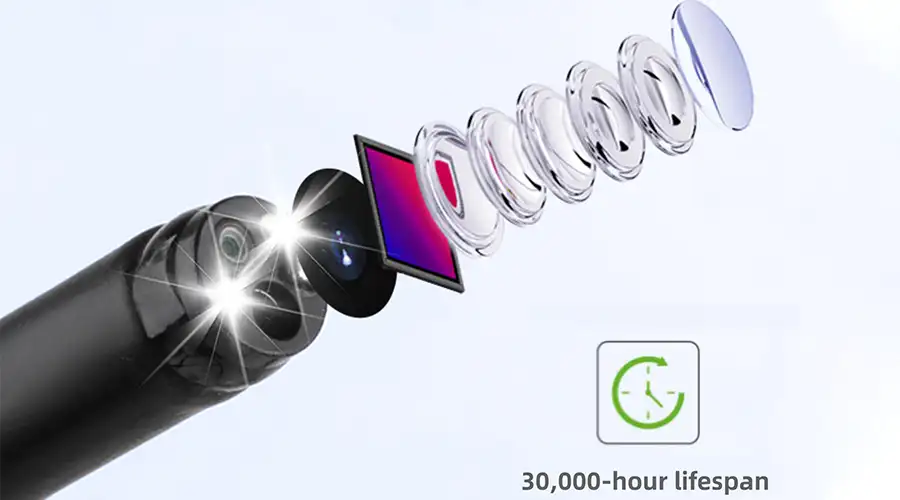

Brightest at Level 5
Brightness: 5 levels
OFF
Level 1
Level 2
Level 6
Level 4
Level 5
Vision Clarity For Confident Diagnosis
High-definition digital signals combined
with structural enhancement and color
enhancement technologies ensure
every image is crystal clear
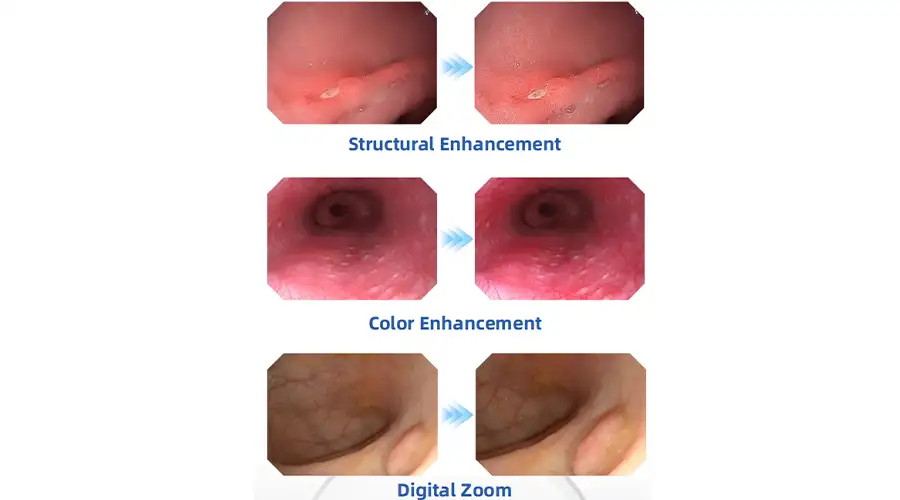
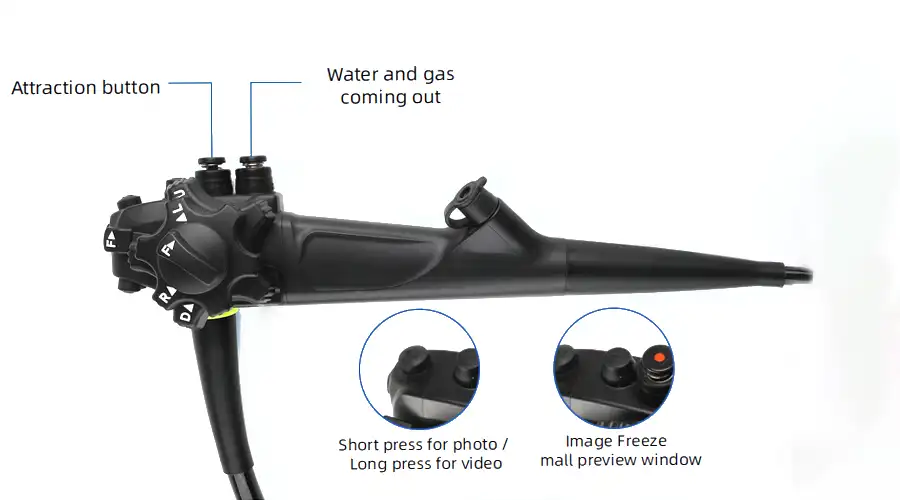
Lightweight Handpiece
Superior handling for effortless operation
Newly upgraded for exceptional stability
Intuitive button layout enables
precise and convenient control
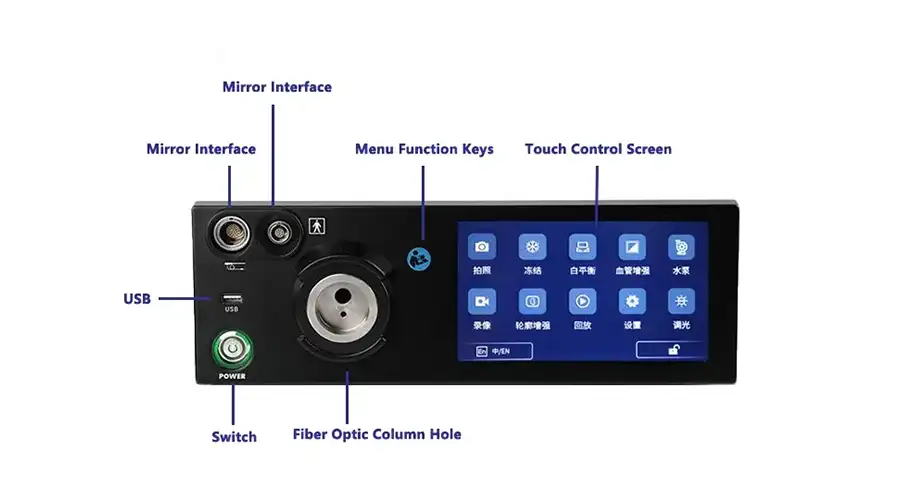
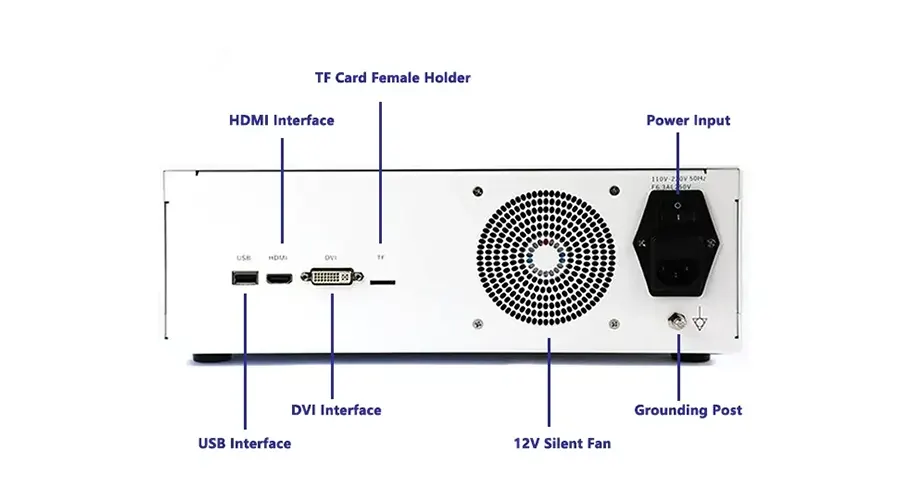
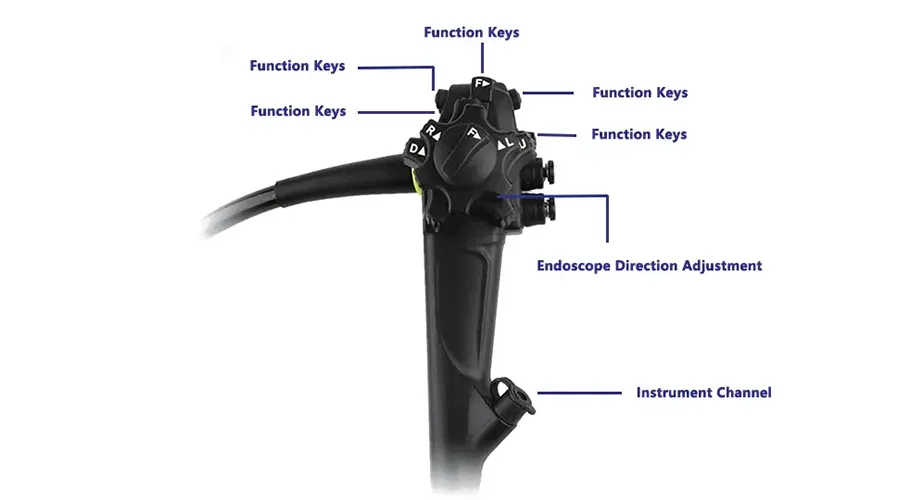
Comprehensive introduction to reusable ENT endoscopes
I. Product definition and classification system
(1) Basic classification
Nasal endoscope system
Diameter specifications: 2.7mm/4.0mm/4.8mm
Viewing angle selection: 0°/30°/70°/120°
Working length: 180-300mm
Laryngoscope system
Straight laryngoscope: 70° forward tilt design
Curved laryngoscope: 90° adjustable bend
Microlaryngoscope: integrated magnifying optical system
Ear endoscope system
Ultra-thin type: 1.9mm diameter (for tympanic examination only)
Therapeutic type: 3mm with working channel
(2) Functional classification
II. Core structure and material engineering
Optical system
Rod mirror group transmission: using Schott B270 optical glass
Anti-fog treatment: Nano-hydrophobic coating (contact angle>110°)
Depth of field range: 3-100mm adjustable
Mechanical structure
Bending part: Tungsten wire braided layer (bending life>50,000 times)
Sealing system: Triple O-ring design (IPX8 waterproof)
Surface treatment technology
Antibacterial coating: Silver ion composite polymer
Wear-resistant treatment: Diamond-like carbon coating (hardness HV2000)
III. Comparison of key technical parameters
Parameter item Nasal endoscope standard Otoscope standard Laryngoscope advanced model
Field of view 75° 60° 90°
Resolution 400,000 pixels 300,000 pixels 500,000 pixels
Working distance 50-150mm 10-50mm 80-200mm
Light intensity 30,000lux 20,000lux 50,000lux
Pressure resistance 3bar 1.5bar 5bar
IV. Management of the whole process of disinfection and sterilization
Standardized process
Pretreatment (within 15 minutes after use)
Enzyme washing (including protease cleaning agent, 40℃)
Leak detection (0.3MPa pressure test)
Sterilization (56 minutes of low-temperature plasma cycle)
Key control points
Tube cavity brushing: must pass through all channels
Drying treatment: compressed air (0.2MPa) purging
Storage conditions: special hanging cabinet (humidity <60%)
Life monitoring indicators
Optical performance attenuation: MTF value drops by >30% and is eliminated
Mechanical failure rate: bending Failure rate of the institution > 5% requires maintenance
V. Analysis of clinical application scenarios
Ninus application
Nasal sinus surgery navigation (error < 0.5mm)
Epiphalgia location (NBI mode detection rate 92%)
Nasopharyngeal carcinoma screening (combined NBI sensitivity 89%)
Otology application
Tympanoplasty (0.2mm precision operation)
Cochlear implant
External auditory canal tumor assessment
Laryngeal application
Vocal cord polypectomy (combined laser)
Laryngeal cancer T staging (accuracy 88%)
Children's adenoids assessment
VI. In-depth comparison with disposable products
Comparison dimensions Advantages of reusable scopes Limitations of disposable products
Imaging quality 500,000-pixel optical system Usually ≤300,000-pixel CMOS
Operation feel 1:1 torque transmission Operation delay exists
Environmental cost Carbon footprint of single scope life cycle reduced by 75% Medical waste generated for each use
Special treatment Supports energy platforms such as laser/radio frequency For diagnostic purposes only
Long-term cost Cost of use reduced by 60% in 3 years Single cost fixed
VII. Technical profile of typical products
Storz nasal endoscope system
Optical system: Hopkins cylindrical lens
Special function: integrated DNR noise reduction
Compatible instruments: full range of FESS instruments
Wolf ear endoscope set
Ultra-thin diameter: 1.9mm/2.7mm optional
Working channel: 0.8mm flushing channel
Temperature range: -20℃ to 135℃
Olympus laryngoscope system
4K imaging: 3840×2160 resolution
Intelligent exposure: 1024 partition metering
Expansion interface: DVI/3G-SDI output
8. Maintenance management specifications
Daily maintenance points
Leak detection before daily use
Weekly optical calibration
Monthly mechanical parts lubrication
Fault warning indicators
Black spots appear in the image (sign of CCD damage)
Bending resistance increased by 20% (wire fatigue)
Seal test pressure dropped by >10%
Cost control strategy
Optimization of spare parts inventory for key components
Preventive maintenance plan (PPM)
Third-party repair service evaluation
9. Technology development trend
Material breakthrough
Self-healing polymer (automatic repair of tiny scratches)
Graphene thermal conductive layer (solves atomization problem)
Intelligent upgrade
Real-time AI-assisted diagnosis (polyp recognition rate >95%)
5G remote consultation (delay <50ms)
Function integration
OCT optical coherence tomography integration
Multispectral fluorescence imaging
Tactile feedback system
10. Market application status
Global market structure
Market size in 2023: $890 million
Major manufacturers:
Karl Storz (32% share)
Olympus (28%)
Richard Wolf (18%)
Clinical application data
Use rate in sinus surgery: 92%
Otology diagnosis accuracy: 89%
Average service life: 350 times
Cost-benefit analysis
Return on investment for tertiary hospitals: 2.3 years
Cost per use: $45-120 (including disinfection)
Professional use recommendations
Purchasing guide
Thirteenth-level hospitals: Choose 4K surgical-grade systems
Primary care: Consider 720P diagnostic-grade configurations
Pediatric specialty: Prioritize ultra-fine diameter models
Key points of technical training
Optical system maintenance (2 hours per month)
Precise disinfection process (annual refresher training)
Emergency handling of faults (practical assessment)
Quality control standards
Comply with YY/T 0287 medical device standards
Pass ISO 13485 certification
Execute the manufacturer's PM plan
This product maintains an irreplaceable position in the field of ENT, and its technological evolution is moving towards "clearer, more durable, and smarter". With proper use and maintenance, it can ensure a stable service cycle of more than 5 years, and is the most cost-effective specialist endoscopy solution.
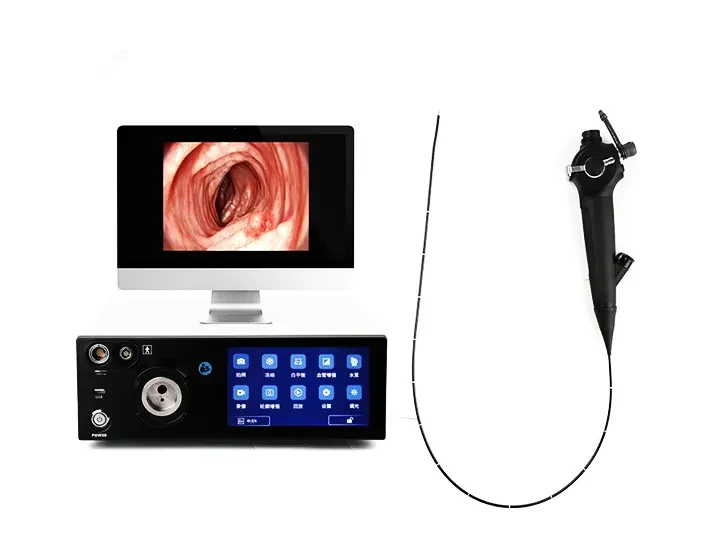
Faq
-
How can Repeating ENT Endoscope Equipment avoid cross infection?
Made of corrosion-resistant materials, it must undergo four steps of pre cleaning, enzyme washing, disinfectant soaking, and high-temperature sterilization after each use to ensure complete elimination of pathogens.
-
What are the daily maintenance priorities for the Reviewing ENT Endoscope Equipment?
Focus on checking the sealing of the mirror body to prevent damage to internal components caused by water ingress; Regularly lubricate joint parts to maintain flexibility; When storing, it should be hung vertically to avoid deformation of the mirror tube.
-
How to deal with yellowing of the image of the Reviewing ENT Endoscope Equipment?
Usually caused by aging of the light source or attenuation of the light guide beam, it is necessary to replace the light bulb or light guide fiber, and if necessary, perform white balance calibration to restore the true color.
-
Which clinical scenarios is the Reviewing ENT Endoscope Equipment suitable for?
Suitable for routine diagnosis and treatment such as outpatient examinations and surgical navigation, especially suitable for medical facilities such as day surgery centers that require high-frequency use.
Latest articles
-
How XBX Cystoscope Supplier Ensures Quality and Precision for Hospital Procurement
Discover how the XBX Cystoscope Supplier provides hospitals with high-precision, OEM-ready endoscopy systems built for reliability, safety, and consistent imagi...
-
How XBX Bronchoscope Factory Delivers Reliable OEM Systems
Discover how the XBX Bronchoscope Factory ensures quality and reliability through advanced OEM manufacturing, optical precision, and strict quality control.
-
How XBX Laparoscope Minimizes Surgical Trauma in Abdominal Surgery
Discover how the XBX Laparoscope reduces surgical trauma through precision imaging, minimal incisions, and faster recovery in modern abdominal procedures.
-
How XBX Hysteroscope Detects and Removes Uterine Polyps
Discover how the XBX Hysteroscope enables precise detection and removal of uterine polyps, improving accuracy, safety, and comfort in women’s health care.
-
What Is an XBX Flexible Ureteroscope for Stone Removal?
Learn how the XBX flexible ureteroscope improves access, visibility, and efficiency in ureteral stone management with 4K imaging and ergonomic control.
Recommended products
-
Portable Hysteroscope Machine
The Portable Hysteroscope Machine (Portable Tablet Endoscope Host) delivers HD imaging and portability for hysteroscopy ...
-
Gastrointestinal Endoscope Host
Gastrointestinal Endoscope Host provides 4K medical imaging for medical endoscopes, enhancing diagno
-
Medical Bronchoscope machine
Bronchoscopy is a core tool for the diagnosis and treatment of modern respiratory diseases. It provi

